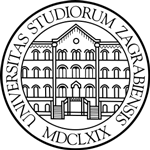Efficiency of Printing Technologies of Graphically Protected Materials
Abstract
This paper attempts to make a hierarchical assessment of graphic protection in order
to enhance its use. It was established that the most common types of approved
protection are also the best known ones and that their implementation enhances
protection efficiency on products which are often counterfeit. Printing offices, publishers
and design authors will protect their high demand products which are subject
to counterfeiting by optimizing printing technology, implementation expenses
and efficiency of the protection system. By means of a system of questioning and
data processing, we created a scale of values of protective graphic technologies,
inks and graphic materials. A survey showed that a large number of examinees
believes in the possibility of counterfeit ballot papers and a hypothesis was tested
which proved that 95% of citizens think that protective graphic techniques should
be used to prevent the counterfeiting of ballot papers. We therefore recommend
the individualization of ballot papers and the implementation of invisible graphics.
It has been proved that citizens would have more confidence in the democratic
elections if guaranteed the protection of ballot papers, which would finally result in
the increased number of turnouts.

This work is licensed under a Creative Commons Attribution-NonCommercial-NoDerivatives 4.0 International License.






